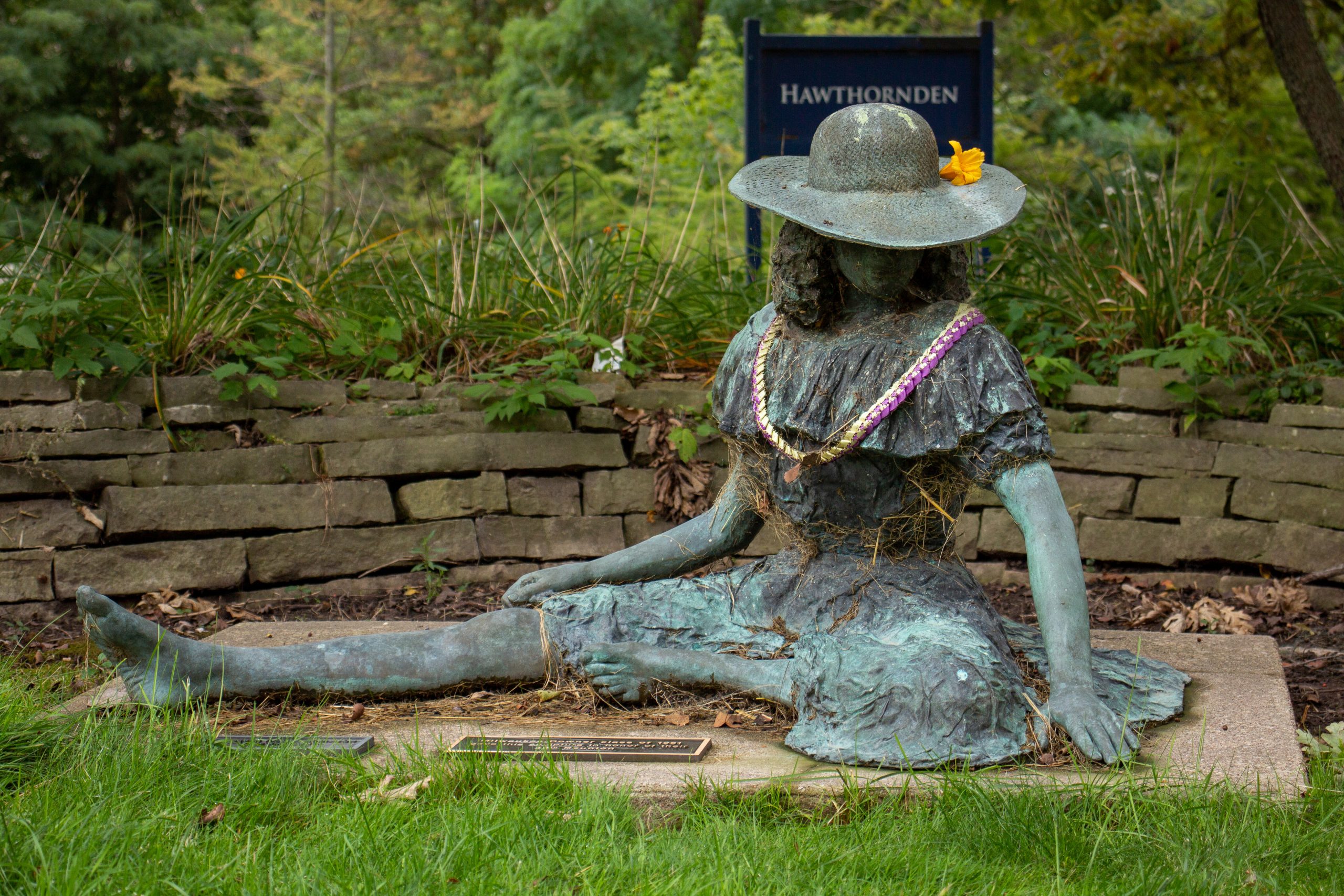Public art is a staple of contemporary cities in America, and for good reason. It both supplies a welcome breath of air from the overwhelming urbanization which surrounds us and (ideally) symbolizes values which define us. Lawrence University is home to many small sculptures and a few larger ones. Each piece has a story, and features in our daily lives, whether we are aware of it or not.
Above the main staircase in the Warch Campus Center is one of the most prominent sculptures on campus, passed under by hundreds of students each day. Entitled “Place to Place”, it was constructed by the artistic duo Gail Simpson and Aristotle Georgiades and installed in Sept. of 2009. The creation was under the guise of the “Actual Size Artworks” project, which aims to enrich public spaces with relevant and meaningful artwork.
The sculpture’s basic form is simple enough; it is two strips of intertwined fabricated aluminum, measuring 30 inches in all. The work plainly depicts two upside-down staircases, combined in a double helix fashion. When asked about their interpretation of the sculpture, sophomore David Hernandez described it as representing the “highs and lows of the college experience,” while sophomore Bruna Velez noted that “it doesn’t take away from the space [in Warch],” and instead “adds to it.”
Indeed, the impressions from both students are right in line with the artists’ intentions. The work’s accompanying plaque describes it as a site-specific depiction of the uncertainty and windy roads of student life, while its enclosure is explained as a “cocoon […] in the supportive context of the university.”
A fault arises in the sculpture’s size; as a piece which towers above three floors, its scale does not take full advantage of the huge space available. For some reason, its plaque is distant from the main floor, making it difficult to notice, let alone read.
On the other side of the spectrum is “Aerial Landscape,” an unapologetically abstract work situated immediately west of the Wriston Art Center. The work was created by Rolf Westphal, a former Distinguished Visiting Professor in Studio Art at the university. Among the older artworks on campus, the piece was first installed in 1988, and reinstalled in 2014 after four years of restoration.
The sculpture includes three overlapping arch-like figures made from yellow stainless steel. It seems, even, that each piece is an upside-down “L” attached to an upside-down “U”—perhaps signifying Lawrence University. There are also four — strangely distant — surrounding bollards.
The abstraction makes it easy for viewers to arrive at drastically different interpretations. When asked about what they thought it represented, sophomore Emma Sayeg saw it as a collection of geometric shapes, “triangles, some pyramids [or] an arch,” while senior Julian Hofstetter compared it to the logo of British musician Aphex Twin. Differently, sophomore Samantha Piwoni noted that she and her friends often likened it to french fries.
Who can blame them? The nearby plaque describes it as representing the front of a Finnish church boat that transported distant churchgoers to Sunday Mass. This description is almost nonsensical, given that a typical person passing by could never assume these details from such extreme abstraction. The sculpture itself is of questionable placement, as it covers a path into the grass which duplicates a parallel path beside it. At night, it is impossible to see and overshadowed by another sculpture close by, the “Otāēciah”
The “Otāēciah” (o-TAA-chee-ah) sculpture south of the Seeley G. Mudd Library is the newest large-scale public art on Campus. Created by the architect Chris T. Cornelius and installed in 2021, its title translates to ‘Crane’, which is a traditional clan symbol of the Menominee nation.
The work is a remarkable cohesion of ideas; its overlapping panels resemble bird feathers, the intricate outward details evoke traditional regalia and textile designs, while the piece physically points towards the Menominee Reservation.
Placed beside a busy path on campus, the sculpture is a clear acknowledgment and legitimization of the Menominee people. The surrounding lights artfully illuminate the work at night, solidifying the visibility of indigenous people—day or night.
These three sculptures are only some of the many on campus. Others include the statue of a girl in Hawthornden, the Merrill Hall Sundial and the many small statues by Shona artists dispersed throughout campus. An artwork’s existence, however, does not automatically affirm its quality. It is up to us to always scrutinize and examine public art, so we surround ourselves with pieces that reflect both us and our community.



